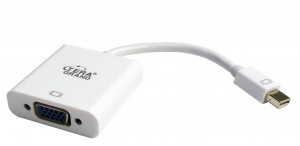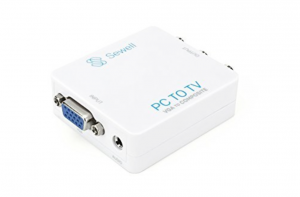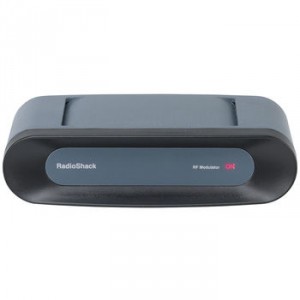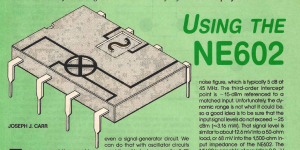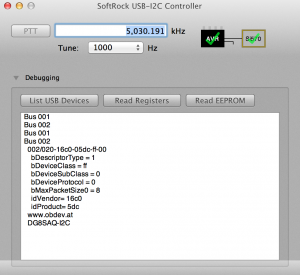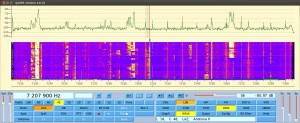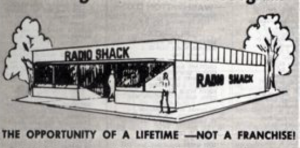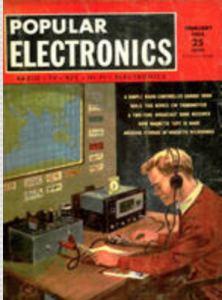Using the python sms-tools library.
sms-tools: https://github.com/MTG/sms-tools
Here is a song made from the processed sounds:
mp3 version:
This project was an assignment for the Coursera “Audio Signal Processing for Music Applications” course. https://www.coursera.org/course/audio
Source material
Sounds were recorded from a shortwave radio between 5-10MHz.
freesound.org links to the sounds:
Processing
am_interference_7mhz.wav
The sound is an AM shortwave broadcast station from between 7-8 MHz. It is speech with atmospheric noise and a digitally modulated carrier at 440Hz in the background.
I tried various approaches to removing the speech and isolating the carrier. But ended up using the following parameters to remove noise and speech, but for most part leaving a 440hz digital mode signal with large gaps in it.
- M=701
- N=1024
- minf0=400
- maxf0=500
- thresh=-90
- max harmonics=50
After more experimentation, the following changes resulted in a cool continuous tone with speechlike quality (but not intelligible) and the background noise is gone.
Here is the full list of parameters:
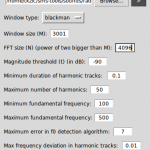
Here is a plot:

Here is the resulting sound of the sinusoidal part of the harmonic model:
buzz_pulse_7mhz.wav
The sound is continuous digital modulation (buzzing) from a shortwave radio between 7-8 MHz. The buzz is around 100Hz with atmospheric background noise.
Transformation using HPS (harmonic plus stochastic) model.
Not very impressive analysis, but the resynthesis had a very cool looking spectrogram due to some frequency shifting.
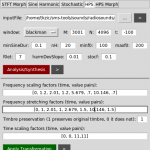

I realized that I had set f0min too high. Went back to using the HPR model without transformation to see if I could separate the tone. Here is the plot:
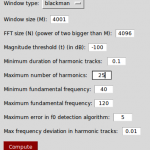
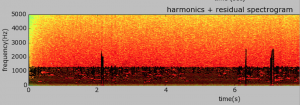
Here are the resulting sounds transformation (unused) and the sinusoidal/residual results that were used in the track.
source: digital_pulse_7hz.wav
A repeating pulse around from a shortwave radio between 7-8 MHz. The frequency of the pulse is around 1000Hz with a noise component.
Another noise filter – this was way more difficult due to high freq material.
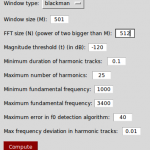

Instead, I went with a downward pitch transform, using the HPS model transform. Here are the resulting sounds from the HPR filter (unused) and the HPS transform.
cw_7mhz1_small.wav
The sound contains typical amateur radio CW signals from the 40 Meter band, with several interfering signals (QRM) and atmospheric noise (QRN). Using the HPR model, I was able to completely isolate and re-synthesize the CW signal, removing all the noise and interfering signals.
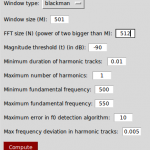
Note that you can actually see the morse code letters “T, U, and W” on the spectrogram of model!

Here is the re-synthesized CW sound:
wwv_5mhz_short.wav
The WWV National Bureau of Standards “clock” station at 5MHz. A combination of pulses, tones, speech, and background noise.
I was trying to separate the voice from the rest of the tones and noise. After several hours and various approaches, I gave up. The signal may be too complex to separate using these models. There were some interesting plots with the HPR model

Finally decided to just isolate the 440 Hz. clock pulse from the rest of the signal:
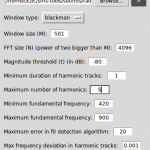

Here is the resulting sound (note that the tone starts several seconds into the sample)

